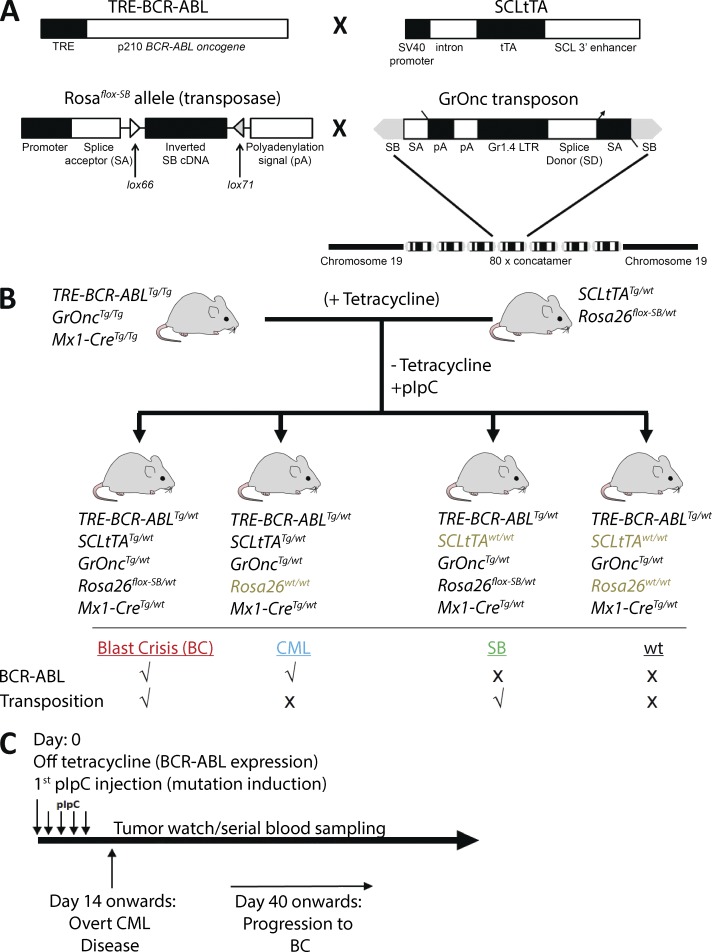Figure 1.
Generation of a mouse model of CML progression. (A) Expression of p210 BCR-ABL (TRE-BCR-ABL) is driven by an SCL 3′ enhancer element (SCLtTA transactivator) in a tetracycline-dependent manner (adapted from Koschmieder et al., 2005). Upon pIpC-induced and Mx1-Cre–mediated inversion, the Sleeping Beauty (SB) transposase (Rosa26flox-SB) is expressed and facilitates transposition of the GrOnc transposon. The transposon construct contains a concatamer of 80 U of the Graffi1.4 virus long terminal repeat (Gr1.4 LTR), splice acceptors (SA), bi-directional adenovirus polyadenylation signals (pA), and a splice donor (SD), all flanked by SB inverted repeats (adapted from March et al., 2011; Vassiliou et al., 2011). (B) The parental lines were established as described in Fig. S1. The experimental cohorts were generated by crossing TRE-BCR-ABLTg/Tg, GrOncTg/Tg, Mx1-CreTg/Tg mice with SCL-tTATg/wt, Rosa26flox-SB/wt mice, in the presence of tetracycline. (C) Upon weaning, mice were taken off tetracycline and treated with 5 doses of pIpC, simulating the temporal sequence of human BC transformation where mutagenesis occurs in the presence of BCR-ABL expression, leading to disease progression from a CML to BC phase. A CML phenotype was detected as early as 14 d and BC from as early as 40 d after tetracycline withdrawal.

